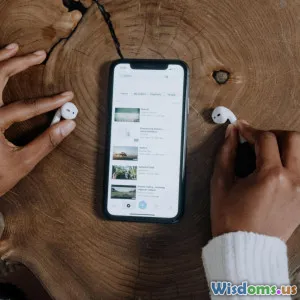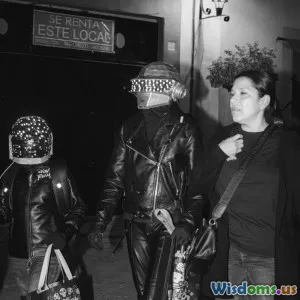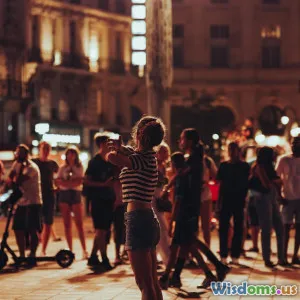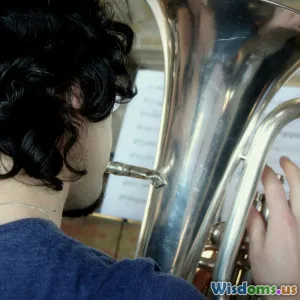
Is Streaming Eroding the Power of Music to Drive Social Movements
8 min read Exploring how music streaming platforms impact music's role in propelling social movements today. (0 Reviews)
Is Streaming Eroding the Power of Music to Drive Social Movements?
Music has long been a pulsating heart of social movements — a catalyst that rallies voices, heightens awareness, and fosters unity among disparate groups. From the poignant civil rights anthems of the 1960s to the protest songs fueling contemporary climate activism, music shaped narratives and spurred action in ways few mediums could. But in our streaming-dominated era, where songs can be played with a click rather than gathering around a communal fire or in protest halls, is music still wielding the same power? Or has streaming diluted its ability to drive social change?
The Historical Power of Music in Social Movements
Before streaming upended the music landscape, songs were embedded deeply within movements. Consider Bob Dylan’s "The Times They Are A-Changin’," which became a defining anthem during the civil rights and anti-war protests of the 1960s. Billie Holiday’s haunting "Strange Fruit" brought visceral awareness to lynching in America. In South Africa, music helped fuel the anti-apartheid movement, with artists like Miriam Makeba creating international empathy and support.
Music was often performed live at rallies, marches, and gatherings, animating collective spirit. Albums and physical singles sold not just as art but as tools for consciousness-raising and fundraising. Music was the soundtrack of solidarity — an accessible and sharable form of protest.
The Shift to Streaming: Democratization and Fragmentation
With the rise of streaming services such as Spotify, Apple Music, and YouTube, the way listeners engage with music has transformed dramatically.
Pros: Accessibility and Reach
Streaming platforms democratize access; someone anywhere with internet can hear a message-rich track within seconds. The barriers to entry have lowered, allowing marginalized voices to upload songs without the need for physical distribution.
For example, the viral spread of H.E.R.’s "I Can’t Breathe" in the aftermath of George Floyd's murder saw streaming as a crucial amplifier for a contemporary social justice movement. Playlists curated around Black Lives Matter created spaces for awareness and education.
Cons: Dilution and Commodification
However, the constant flood of content transforms individual songs into fleeting digital moments easily lost amidst millions of tracks. The emphasis on singles and algorithms that prioritize catchy hooks can steer artists away from making challenging, message-driven music.
Data from Nielsen Music reports that listeners often stream upwards of 200 tracks monthly, creating a culture of rapid consumption rather than deep engagement. This segmented attention makes it harder for protest songs to sustain the momentum movements require.
Moreover, the algorithm-driven nature of streaming can create echo chambers or shuffle social messages into obscurity unless they achieve viral status. The innate commercial pressures mean emotionally provocative music sometimes gives way to more palatable, broadly marketable sounds.
Artists Navigating the Streaming Era
Many artists still recognize and harness music's activist potential amid streaming trends.
Take Childish Gambino’s "This Is America," whose accompanying video became a global talking point for systemic racism, benefiting from massive online shares alongside traditional media. Lyrics by socially conscious artists like Janelle Monáe or Kendrick Lamar continue addressing inequality while commanding streaming charts.
Yet some artists lament how the digital stream shapes artistic expression. Indie artist Anaïs Mitchell expressed concerns that "the lifespan of a song is shrinking, making songs less about long-lasting messages and more about momentary hits."
Artists are turning to cross-media engagement — combining music with social media, live performances, and activism — to deepen impact, sometimes supplementing streaming milestones with grassroots organizing or direct action campaigns.
Audience Engagement in the Streaming World
Streaming has changed how audiences consume protest music. Instead of communal listening or rally singing, many now discover songs via curated playlists, social platforms, or branded collaborations.
This shift influences the feeling of connectedness. Studies show that shared musical experiences promote empathy and collective identity, which can be diluted when music consumption becomes isolated and passive through earbuds.
However, digital platforms also enable sharing songs internationally in record time. The viral spread of Pussy Riot’s feminist punk protests or the Chilean protest song "El Derecho de Vivir en Paz" in global TikTok challenges exemplify music’s sustained viral activism potential.
Can Streaming and Social Movements Coexist Powerfully?
Streaming is neither inherently good nor bad for music’s activist impact; it changes the playing field.
- Adaptation is key: Movements and artists must innovate strategies, blending streaming with other forms of activism to maintain momentum.
- Community-building beyond music: Engaging audiences in participatory action — social media challenges, fundraising drives, and educational campaigns — can keep the spirit alive.
- Elevated curation: Playlists dedicated to social justice and activism curated by trusted voices help cut through algorithmic noise.
A 2021 Spotify report found that socially conscious songs increased in streams by 35%, indicating sustained demand for meaningful content within streaming.
Conclusion: Streaming—A Tool, Not a Barrier
Streaming has redefined music’s role in social movements, introducing challenges and opportunities. While it risks fragmenting attention and commodifying messages, it also expands access, accelerates global reach, and offers new platforms for storytelling.
Music’s power to drive social change ultimately depends on artists’ creativity and listeners’ engagement. Far from eroding this power, streaming can amplify it—if wielded thoughtfully. Activists and musicians must harness both the breadth of digital reach and depth of human connection to ensure music remains a vibrant engine for social progress.
In the end, the soul of movement music beats as loudly as ever, provided we listen beyond the streams and into the stories they carry.
References:
- Nielsen Music Report, 2022
- Spotify Social Impact Study, 2021
- Quotes from Anaïs Mitchell and Childish Gambino interviews, 2019-2021
- Case studies: H.E.R. - "I Can’t Breathe," Childish Gambino - "This Is America"
- Historical context: Billie Holiday’s "Strange Fruit," Bob Dylan’s civil rights era songs
Rate the Post
User Reviews
Popular Posts

















